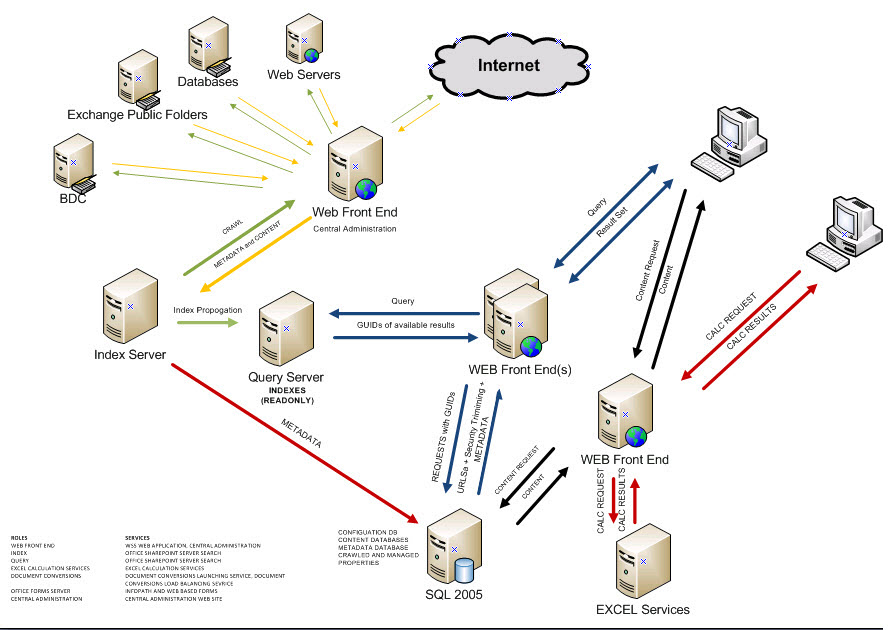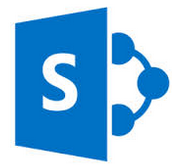
Things have been very busy at the Geoff front. Work on the GUI version of GEBestBetAdder is being finalised. This tool will help you migrate and manage Best Bets from SharePoint 2010 enabling you to migrate to Promoted Results in SharePoint 2013 and beyond, including just some of the following features:
- Create Query Rules and Promoted Results into SharePoint 2013 and beyond from SharePoint 2010 Best Bets and Keywords
- Add, Edit and Delete custom Query Rules and Promoted Results without having to access SharePoint
- Export Query Rules, Promoted Results to Excel and XML formats
- Manage existing Query Rules on a site by site basis
The tool has been long in the making and has been great fun to build – its absolutely crammed with features. The tool will be made available on a trial basis very soon, am aiming for release by end of August 2019. It will even include the ability to migrate Query Rules to/from on-premise to Office 365. If you are interested please contact me and I’ll add you on the trial list.

One of the most compelling challenges for Office 365 is centralised monitoring. Those working in the SharePoint arena will know only too well importance of monitoring and reporting across the platforms they manage. This is not simply from a technical but also from proof of service; the availability and evolution of those services.
(more…)

Merry Christmas Everyone!
As the seasonal period quickly approaches, the discussions concerning what happens to supporting SharePoint over the holiday either approaches, or has been covered, or even assumed. The Christmas period is of course where your SharePoint sponsors are more likely to show a little more concern than normal about how their SharePoint platforms are going to be monitored over the period.
So then, lets remind ourselves of the holiday period in question – basically, the days that will relate to anyone, is the week of Christmas starting from the 23rd through to the 28th. There are two days pretty much important to us guys in the UK over the seasonal period, especially in Scotland – Christmas Day and New Years day. Then there is Boxing day when it’s likely that you would be relaxing in front of the telly, or sledging, or skiing – using that day to wind down after the Christmas day madness. Then there’s the two days after boxing day, the 26th and the 27th, where relaxation, relief and playing with the various presents, and getting stuck in to food 🙂
So that means that over the period you are likely to do over those two days, probably a combination of one or more of the following not be in the Office, switch off the mobile, inform people you are not available?
So chances are, that on the days in question, you will be chilling out, and possibly even like me having a choice Mince pie, a Glass of port (or more – like Rum)…
But this is not about what you will be doing over those periods away from the office. It is about how you are going to support SharePoint, isn’t it?
First, let’s consider the available types of support:
- On Premise SharePoint Support / IT Support combined / Outsourced
- Off-Premise Office 365 Microsoft provisioned Support
- Third party product support
-
Throwing caution to the wind
My dad once said to me when I was a lot younger that in order for Santa Claus to know what present I would like, that I should write a letter, and throw it into the wind when it was blowing north, so that the letter would reach the north pole.
Of course, by doing that I eventually realized that the letter would not get there, unless my dad without me seeing ran like the clappers to retrieve the letter once I threw it out of the window.
Clearly, I was throwing caution to the wind, assuming things would happen – luckily for me, most of the times when I did throw that letter, things would work out – but only because there was a contingency – my dad, running like the clappers.
This relates in a way to the lack of responsibility those charged with SharePoint management judge the level of the support needed to ensure the availability of SharePoint services over an important period, like Christmas! There is not enough preparation carried out preceding the Christmas period by some organizations, to ensure that there is adequate coverage of SharePoint support. In some organizations, instead, there is a laissez faire approach, by simply throwing caution to the wind. Or, worse still, their IT support departments will not think to include SharePoint as system that should be monitored, and instead not including those with basic knowledge of SharePoint on the support desk.
Take this real scenario which happened a while back. Fictional company used though, however, if their now SharePoint support individuals are reading this article, they will definitely remember this event!
Five days leading up to Christmas day. Fabrikam has an IT Support department, and a number of individuals who are tasked solely with looking after SharePoint, called ‘SharePoint Admins’. These SharePoint Admins look after the platform solely, there are no monitoring systems in place except for the server monitoring systems (alarm bells ringing already – no pun intended). A member of IT Support asks what the SharePoint Administrators will be doing on Christmas day.
“We won’t be around, that’s for sure…” … “SharePoint looks after itself” – pipped the SharePoint Administrators. “We will just take a peek at midday to make sure all is well”.
IT Support reports this discussion to the IT Support Manager. The IT Support Manager waves his arm saying ‘that’s not a problem, we have IT Support people on the desk who know a little of SharePoint, nothing can really go wrong’.
Over the next 4 days, no more is mentioned as the company ‘winds down’. On the 23rd of December, the CEO puts a Christmas message to the communication team who then puts the message in an announcement list on the Fabrikam SharePoint Extranet.
Christmas Day. At 9.30am that day, the CEO of the company, with his family in the Seychelles, decides to show a friend the message that was put on the SharePoint Portal on the 23rd. When attempting to display the announcement, the web page displays an error. Concerned, he raises a call into IT Support. IT Support try to get hold of the SharePoint Administrator, who has switched off his mobile because he is at the top of the hill where he lives, sledging. The CEO asks whether there is anyone else who can help, but IT Support have no knowledge of anyone and neither do they have any other contact number for the SharePoint Administrator.
The SharePoint Administrator calls in at midday to find chaos. The CEO is fuming because he has no idea whether anyone saw the announcement, and even if they tried saw the error which was embarrassing. IT Support have stated to the CEO that they do not know how to fix the problem, which is embarrassing. And, guess what, the SharePoint Administrator, who fixes the issue in minutes finds that the rest of his day is spent building confidence with the CEO and IT Support – he is embarrassed.
That SharePoint Admin threw caution to the wind. And in doing so, assumed the following:
1: No one will care whether SharePoint is available or not
2: The SharePoint Admins does not care whether SharePoint is available or not
3: The SharePoint Admins assumed that the problem will ‘fix itself’
4: The SharePoint Admins assumed that they will eventually be told or will find out themselves that there is a problem, and that no one will moan when they do, or how long it takes to correct the problem.
5: That if a problem occurs where SharePoint is not available that there is no financial impact or otherwise
-
Preparing for Christmas
You must prepare your SharePoint environment to be supported over the Christmas period. This is just like preparing for Christmas itself. Doing things like putting up a Christmas tree, carefully putting up decorations without falling off ladders, writing Christmas cards, posting them, wrapping presents (carefully) without getting the sellotape stuck on the wrong part of the wrapping paper and making a mess. You put effort into doing all of that because you want to make others comfortable and yourself prepared. Therefore, there is no difference when it comes to SharePoint support.
There are a nine things you could put in place, so that you can ensure that SharePoint is supported over the Christmas period:
- Make it clear the days when there will be SharePoint cover over the period. When on holiday, for example, ensure that there are phone contacts and that is communicated to IT Support and your SharePoint sponsor.
- Ensure that the contact details have a backup. One number is not enough. Consider adding on the home phone number or the number of the place you will be staying / visiting on the key days. Reasons for this could be bad mobile coverage, or you could be travelling
- Ensure that there is a remote method of you accessing the SharePoint environment. Most organisations using on-premise SharePoint have a method whereby individuals can log in over the Internet using say a Citrix / VPN / Xen Desktop etc. connection.
- Ensure that a member of the IT Support team is aware of any resolutions that can be used for ‘possible issues’. For example, one issue could be that in order to quickly reset an application pool for a SharePoint site to go into IIS on a relevant server, etc.
- Ensure that there is a list of the infrastructure, and details of any specific login information.
- Based on point (3) above, try to log into the SharePoint environment at least once a day to quickly check the status of the environment.
- Ensure that relevant third party information concerning their levels of support is listed and the details made known to IT Support.
- Provision monitoring systems for IT support which includes the status of key services to the SharePoint platform (on-premise).
- Provision monitoring services which includes the status of services for Office 365 Tenants
-
On-Premise and Off-Premise Support are that different
At a very basic level, the provision of support for SharePoint over a Christmas could be divided two segments – the SharePoint ‘supporter’ – the associated services ‘supporter’.
For on-premise SharePoint, the levels of support are:
1: The SharePoint ‘supporter’. The person(s) responsible for managing the products provided in SharePoint services.
2: The Associated services ‘supporter’. The person(s) responsible for providing support for the infrastructure and associated services.
The interesting aspect of Off-Premise (e.g. Office 365) Support is that there is in effect, also two levels:
1: The SharePoint ‘supporter’. The person(s) responsible for managing the products provided in the Office 365 tenant – e.g. SharePoint Team Sites and relevant products in those sites.
2: The Associated services ‘supporter’. The person(s) responsible for providing support for the Office 365 tenant.
Both of these, on-premise and Office 365 have monitoring tools. Both have the priorities and service delivery of support defined to SLAs, which is communicated to the person responsible for managing the products provided. This information is then cascaded in an understandable form to the client.
There is a huge amount of monitoring tools available to on-premise SharePoint support (default and third party provisioned), which I will not go into (and there are a huge number of articles that describe them). SharePoint Online now has a good amount of services and tools for monitoring. The Office 365 Admin app for which allows those responsible for supporting Office 365 to connect to their organization’s Office 365 service status on the go. The app enables them to view service health information and maintenance status updates from their mobile device. You can also filter information by service subscriptions and configure app data refresh intervals.
To get the app, go here:
https://www.microsoft.com/en-us/store/apps/office-365-admin/9wzdncrdtbmj
Office 365 also has the Office Message Centre. The Message Centre is located in the Microsoft Online Portal. The Message Centre is the central hub for communicating with you about Office 365. And in there you will find the topics including those in the Admin Task Newsletter, messages on new feature releases, and other important information. The Office Message Centre also links with the Office365 Admin app, so you can have messages concerning the state of services sent direct to your mobile device.
More information about the Office Message Centre: http://blogs.office.com/b/office365tech/default.aspx
There are also methods of logging transactional data through code. Microsoft is releasing the Office 365 Management Activity API which allows visibility of all user and admin transactions within Office365 covering activity logs. These logs would include information like tenant, service, action, object, user location, IP Address and more.
More information about the Office 365 Management Activity API: https://blogs.office.com/2015/04/21/announcing-the-new-office-365-management-activity-api-for-security-and-compliance-monitoring/
Additionally, for those who have access to Microsoft System Centre Operations Manager, there are of course services available to monitor SharePoint on-premise, and to monitor Office 365. For those who have not done this before, or need to get further information, I wrote a blog ‘Office 365 Monitoring using System Centre Operations Manager’ located here:
http://blogs.msdn.com/b/mvpawardprogram/archive/2015/07/08/office365-monitoring-using-system-centre-operations-manager.aspx
-
Conclusion
I hope by reading this article you have understood the importance of providing adequate and understandable SharePoint support over the Christmas period. The ability for you as a SharePoint ‘supporter’ to be forewarned of issues so that at the very least clients can be informed is vital. For on-premise, the ability to be contacted, or the ability provided to IT support to be able to deal with common issues, provides a service which in the eyes of the SharePoint sponsor is ‘good’. So I do hope that you are able to take points from this article and apply them to your SharePoint support cover proposals….
I’d like to finish up by wishing you and yours a wonderful holiday season!

Hi there folks!
Sometime ago I created a quick ten step guide and had it published on TechNet – amazed to find so much interest, and great comments! ShareGate contacted me and asked if they could turn it into an info-graphic (which looks great); now available on their site and is displayed below – enjoy!
(more…)

Getting hands on deployment information concerning SharePoint 2019 can be a challenge. Managed to locate this guide which is created by Microsoft detailing the process!
(more…)

Microsoft has today released the Office 365 for business public roadmap. The Office 365 for business public roadmap provides customers with a way to learn more about upcoming change and updates before the change impacts their service.
Go here to see the Office365 for Business Public Roadmap
The public roadmap will be closely coupled with the larger Office 365 Change Management strategy, including integration with Message Centre and the Office 365 direct to admin communication channel.
This is an extremely important and very useful service delivery mechanism to ensure you know what services will affect Office 365 customers – the roadmap page is split into sections allowing you to see what features are launched, rolling out, in development and cancelled.
Another very important read is the Improving visibility to service updates blog which gives more information concerning the concepts behind the Office 365 for business public roadmap.
So what is the public roadmap?
The Office 365 for business public roadmap is a web page on Office.com that provides customers with a list of new and updated features being released to the Office 365 service. The website will list recently launched features, features still rolling out, and features that are still in development. The website will launch with a monthly update cadence.
Note that the public roadmap does NOT commit Microsoft to specific timelines for delivering service updates. It follows a set of policies for what should and should not be included based on when an update is expected to being rolling out and previous disclosure of a particular update. The content goes through a quality assurance pass bi-monthly as part of previous NDA roadmap activities.
Why is the public view of the Office 365 roadmap being created?
As both engineering and marketing move to a services operating model, Microsoft are changing the way they approach customer communications. Part of this transformation is going directly to customers and scaling communications to every Office 365 customer from the individual business owner with 1 employee to the largest enterprise or governmental organization with hundreds of thousands of users.
From examining customer data it has been seen that customers expect a “service” to behave like other services in their life, such as cable or mobile phone subscriptions. They expect notification and communication about any changes to their service. PSAT data, focus groups, and OneList items all show the high cost in the old operating model that erodes customers’ trust and confidence in Office 365.
So what’s next?
Microsoft will be listening closely to customer, partner, and field feedback for improvements that fit within policy guidelines. Improvements currently being evaluated include localization into tier 1 languages, notification or tracking capabilities for the site change log, and expanding to include out-of-scope Office 365 instances. They will continue to refine the update tracking process and use the Office Release Roadmap as the single source for data related to service updates.

Microsoft have provided a great video clip explaining what SharePoint is. I think it is a really good advert for SharePoint, but at the same time, helps you demonstrate the collaboration features that enables SharePoint to solve information and collaborative challenges.
(more…)

I was asked to describe how a small team, who has never seen SharePoint or Project before, could take on a SharePoint look at Project Management tools focused Information Worker level. By doing this, a Project Management solution could be created whereby solving collaboration and information challenges. This article describes how that can be done to enhance project team efforts, enable project information can be centralised and managed using SharePoint 2013 using built in features only. This is in order to help solve Delivery Manager issues concerning planning progress, reporting progress and auditing progress.
(more…)

I’ve been getting quite a few calls from customers who are in the process of taking SharePoint 2013, who are currently SharePoint 2010 users and quite rightly concerned about what functionality is not available in SharePoint 2013.
(more…)

In SharePoint, there are topology concepts to understand and consider. Servers have roles such as Web, Query, Index, Calculation, Application, and Database. Farms have relationships such as Authoring, Publishing, Development, Test, Staging, and Production as well as service applications covering Search, Profile, Access, Business Data Connectivity, Excel, Machine Translation, Managed Metadata, PerformancePoint, Secure Store, Word Automation, Work Management, Usage/Health, Visio and others. In a SharePoint farm, SharePoint is comprised of Servers, Web Applications, Databases, Site Collections, Sites, Lists, and Items (and in that order from a hierarchical perspective in that order).
The concept of this is difficult to describe graphically, and especially if you are going to design a topology for a customer you will need a good approach. I use Visio for designing topology diagrams, and I managed to get a couple of documents that provides an overview of topology concepts for SharePoint 2013. These are pretty good, if you need to understand the topology and therefore some other concepts such as performance, scale, fault tolerance, etc. These diagrams include topologies, based on the traditional approaches to building SharePoint architectures in these documents.
They are available for download here:
PDF: http://www.geoffevelyn.com/downloads/sps_2013_traditional_topology_model.pdf
VISIO: http://www.geoffevelyn.com/downloads/sps_2013_traditional_topology_model.vsd
I have been asked a lot about the actual process of upgrade from SharePoint 2010 and whether there is any best practice material. Yes there is, and its pretty good! This model explains the process that you use when you upgrade from SharePoint Foundation 2010 or SharePoint Server 2010 to SharePoint Foundation 2013 or SharePoint Server 2013.
They are available for download here:
PDF: http://www.geoffevelyn.com/downloads/sp2013-upgrade-process.pdf
VISIO: http://www.geoffevelyn.com/downloads/sp2013-upgrade-process.vsd
The article is located here: http://www.microsoft.com/en-gb/download/details.aspx?id=30371

Take control of user adoption and governance processes in your next SharePoint 2013 deployment—whether it’s a specific site or complete farm solution. In this book, you’ll learn proven techniques and methods that will help you better manage the entire project lifecycle concerning SharePoint implementation from a practical standpoint.
Discover how to:
- Align organizational goals and requirements
- Define the full scope of the project
- Set up a team to deliver a SharePoint solution
- Effectively communicate with and include your stakeholders
- Prepare for user feedback and adoption
- Establish and maintain governance through the entire project
- Use web analytics to provide substance to governance
- Confirm readiness for delivery to the organization
Go here to get the book and find out more information.

Excerp: “For those entrenched in trying to get information workers to buy into using SharePoint, SharePoint User Adoption seems to be a black art. In a way, it is because the kind of enticements and methods you use will be relative to the product that is being supplied. In reality, complexity of User Adoption is based on the breadth of the SharePoint solution being implemented.
This article shows the different types of people there are in terms of the User Adoption (which has a lifecycle), and attempts to identify the related high priority areas where you should focus your communication and training programmes. Note. The kind of users involved are ‘generic’; and therefore you should use this as a model for any SharePoint solution – irrespective of version. The key areas of SharePoint I will focus on relate to Information Architecture, Term Store, Search and User Profiles and in SharePoint 2013”.
The article I wrote for MSDN newsletter is located here:
http://blogs.msdn.com/b/ukmsdn/archive/2012/11/13/sharepoint-user-adoption-key-things-to-mention-for-sharepoint-2013.aspx

User Adoption of SharePoint is based on meeting the goals and requirements of the business sponsor. To do that, there is an importance in ensuring that the correct features are applied to the relevant solutions to meet their goals. Platform Governance is key; since there would need to be knowledge of the relevant features and an understanding therefore in how they would be implemented, supported, maintained in an evolving SharePoint landscape. This is particularly important in deciding on the migration path of SharePoint 2010 to 2013, since quite a few features have been enhanced.
(more…)

Am in the land of setting up quite a few 2013 environments to demo and test. Some using VMware, HyperV, Cloudshare to name a few. Ran into a ‘gotcha’ starring SQL which I thought I would share. In this scenario I’m setting up a Dev / POC environment which is a single server SharePoint 2013 environment and not set as a Domain Controller. SQL is also deployed to that box. Using the UI it’s not possible to create a new farm due to the fact I’m using a local account as farm admin, therefore, had to use the wonderful New-SPConfigurationDatabase Powershell command to create the SharePoint config database).
(more…)

Yaaaay, SharePoint 2013 is now available on preview – there’s a whole pile of blogs coming your way concerning Office integration and SharePoint 2013 from me. Also, watch out for my new book which I will announce shortly – for now, get the download and start trying it out!
Download here:
http://www.microsoft.com/en-us/download/details.aspx?id=30345
Installation Details here:
http://technet.microsoft.com/library/cc262485%28office.15%29?ocid=fwlink





















